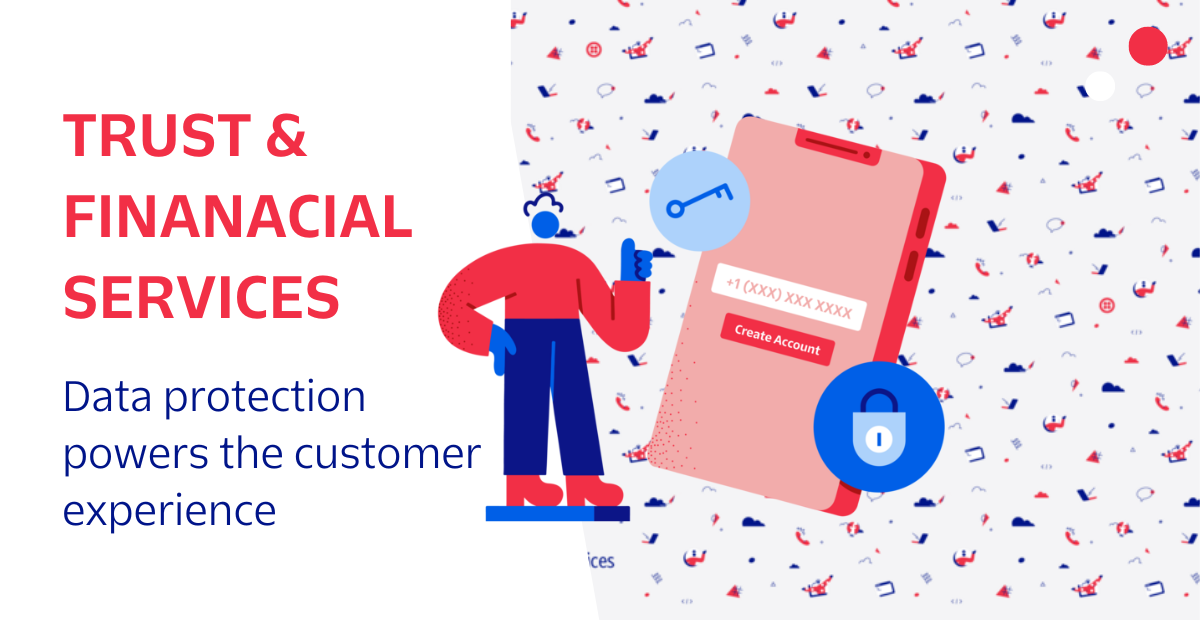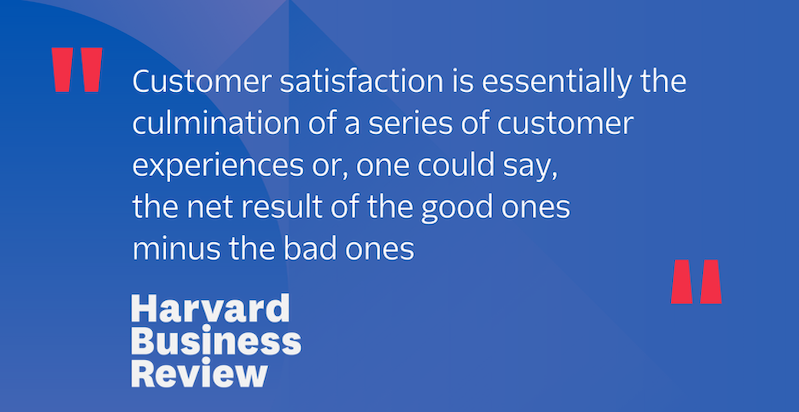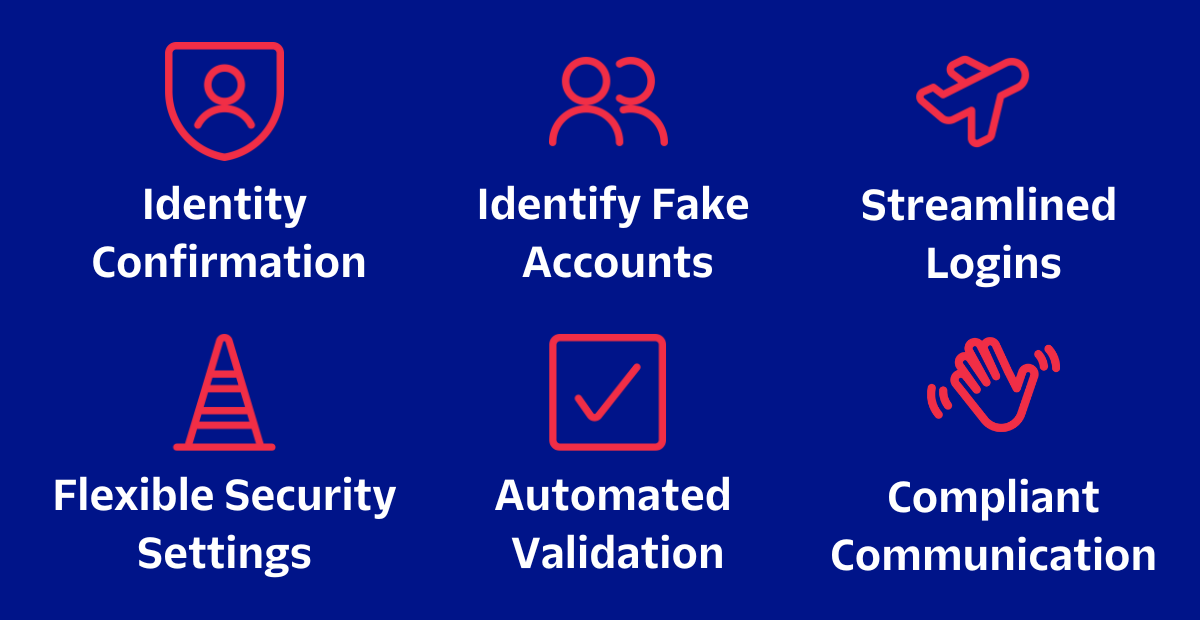Trust & Financial Services: Data Protection Powers the Customer Experience
Time to read: 5 minutes

In most industries, streamlining the customer experience is enough of a burden. Data comes in from all sides: through messaging apps, phone calls, video interactions, contact centers, marketing properties, and anywhere else organizations collect and store data. That's why protecting customer data is a necessary way to build trust to ensure a positive customer experience. For the financial services industry, one of the most highly regulated in North America, if not the world, ensuring that they are protecting consumer data is critical to their survival.
“Customer satisfaction is essentially the culmination of a series of customer experiences or, one could say, the net result of the good ones minus the bad ones,” according to the Harvard Business Review article “Understanding Customer Experience.”

Of course, when it comes to data protection, account security, and compliance, the best days are when no one notices anything. Being in compliance and adequately protecting data in the financial services industry is a critical function. And the importance of ensuring that all channels are secure is growing because the threats are also growing. In the first half of 2022 alone, a leading cybersecurity vendor blocked 63 billion threats, up 50% from 2021 according to Infosecurity Magazine. And that, my friends, is no good. 👎
So, how can we bolster trust, reduce friction, and ensure that data is protected? Build resilient and compliant customer experiences.
The role of regulation and compliance in customer experience
Customer experience and legislation may seem to be disconnected concepts. In reality, if financial organizations are hemorrhaging money to pay fines for being out of compliance, they’re not investing in other parts of the business that can contribute to the bottom line, such as improving the customer experience.
In an ideal world, organizations would adequately protect data by leveraging their own preventative security measures that allow them to detect, investigate, and respond to incidents. In addition, working with vendors who are also invested in financial services’ success and are actively working to mitigate risks and comply with regulatory demands, will offer financial organizations layers of resilience.
Technologies designed to ensure that the customer experience is more seamless are often at odds with data protection regulations if not monitored and modified to suit requirements like data storage, use of personal devices, etc. That’s why it’s important to partner with organizations to enable secure communication with customers and clients to ensure that there are convenient options for all involved. Without a compliant, user-friendly experience that integrates with existing technologies, financial organizations will spend money on fines and lose customers to boot 🥾.
The cost of being non-compliant
Wall Street Journal reported that well-known banks and brokerages were fined for violating the rules around written communication storage. Global banking institutions like Bank of America, Citigroup, and Morgan Stanley were, as of September 2022, settling claims with the Securities and Exchange Commission and the Commodity Futures Trading Commission. That number is to the tune of $1.8 billion, a tidy little sum that will likely ensure that those financial organizations have strong guardrails around personal use of devices and personal messaging apps in the future.
Although the loss of assets is a priority for both financial institutions and their customers, trust is also a commodity not to be trifled with. That’s where account security meets compliance to complete the data protection circle.
Account security, data protection, and customer experience
Financial services have historically been seen as trustworthy. This perception was hard-won over the last century thanks to the scrutiny of government entities and simple capitalism. Bad banks don’t make it.
Even if consumers trust a bank, they likely have valid paranoia about rising virtual crime. Today the rise of “the cybercriminal” is the real threat. Even if financial organizations have a great relationship with customers and are able to delight them with the rest of their customer satisfaction efforts, these organizations need to actively protect customers’ data. Protecting them against rising threats is table stakes. If you fail to do that, their reputation, assets, and customers are at risk.
4 elements that make for a frictionless customer experience
For financial industry customers, customer experience from an account security perspective is made up of the following elements:
- Easy onboarding - Getting a new customer, client, or member into their account is no longer a nice to have, but a need to have. Too much inconvenience and your customers are going to abandon ship. However, to do this safely, financial institutions require a way to validate identity, compliantly integrate with other financial services platforms, and collect personal information. Any one of those can be an account security nightmare.
- Seamless logins - Once they are a customer, getting them back into their account needs to be just as seamless. Simplicity in getting into the account needs to be balanced with safe and compliant ways to replace and retrieve passwords, identify attempted security breaches, and identity verification.
- Secure transactions - Whether it’s adding funds, purchasing a product, or buying a stock, knowing that your customer’s information is safe when it’s interacting with your own in-house system or an external partner website. From selection to purchase to payment processing, the exchange of money offers vulnerabilities that are to be avoided at all costs.
- Simple account management - What might seem like a simple name change or bank account update to your use can indicate a data breach. Financial organizations need to have ways to build progress checks and balances to ensure that every change is intentional and sanctioned by the user.
These foundational elements may seem simple, but those managing customer experience know the infrastructure that is put in place to protect them is non-trivial.
Getting ahead of data protection
In order to help fend off $40 billion of risk (the cost of the average US data breach in the United States according to IBM’s report Cost of a Data Breach 2022 is $9.44 million and it’s estimated that the total number of breaches in the US will be approximately 4000 according to TechRepublic), financial institutions need to have the following:

The state of customer experience in financial services
It’s indisputable that a frictionless customer experience is a key to a better relationship with customers, clients, and members. In fact, one study by Qualtrics predicts that banks can expect a 27.5% growth rate by improving their customer experience scores by 10%.
Staying in compliance with ever-expanding regulations and prioritizing a customer’s account security is a surefire way to win their trust. Of course, it doesn’t stop there. True excellence for financial institutions is about thinking about the customer experience and protecting data as a part of the larger customer journey within an organization. From lead to prospect to customer to post-conversion, messages of trust and commitment to customer protection and organizational resilience are core to a successful data protection strategy.
Maureen Jann is a Senior Content Marketing Manager at Twilio. She has over two decades of experience as a marketer and has helped fintechs, financial service organizations, and healthcare organizations level up their marketing strategies. Maureen has a Bachelor's of Art from San Jose State, and an MBA from the School of Failed Startups. She is a frequent speaker and guest writer for popular marketing industry organizations and lives in the Pacific Northwest with her husband, daughter and dogs.
Related Posts
Related Resources
Twilio Docs
From APIs to SDKs to sample apps
API reference documentation, SDKs, helper libraries, quickstarts, and tutorials for your language and platform.
Resource Center
The latest ebooks, industry reports, and webinars
Learn from customer engagement experts to improve your own communication.
Ahoy
Twilio's developer community hub
Best practices, code samples, and inspiration to build communications and digital engagement experiences.


